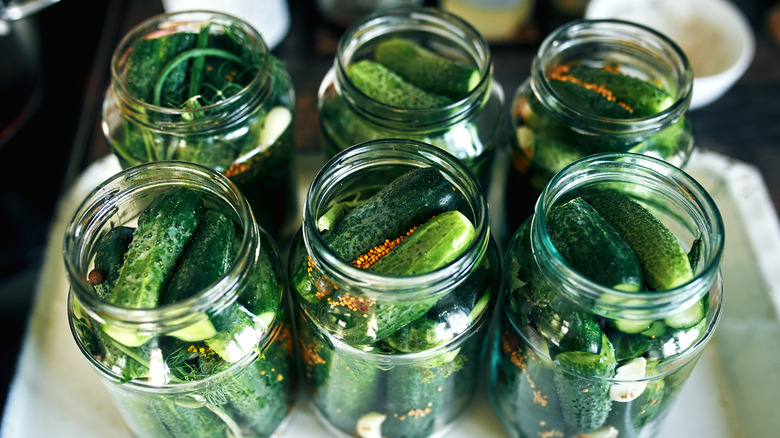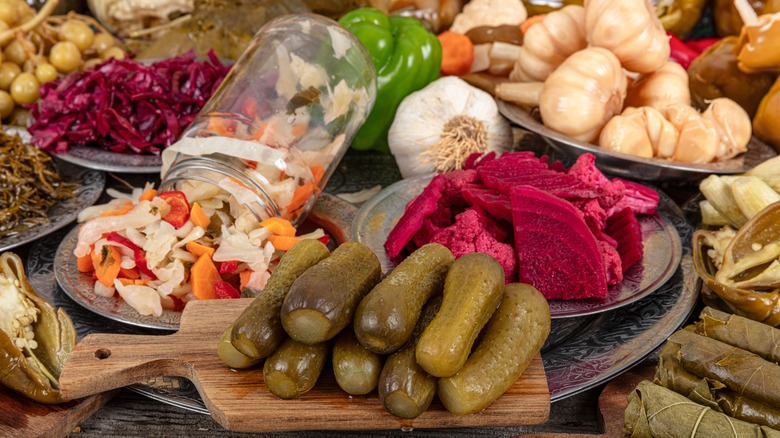When To Pickle Vegetables Using The Hot Vs Cold Method According To An Expert
Pickling is not only a historically essential method of food preservation, it's often the process behind tangy, sour, salty flavors that can take a dish to the next level. From topping your nachos with pickled red onions to adding pickle brine to brighten up soups, there are so many creative ways to incorporate pickled veggies and their brine into your culinary arsenal. If you want to learn to pickle vegetables at home, you're in luck, as the process could hardly be simpler. There are some tricks to keep in mind, however, and step one is determining whether to use the cold or the hot method.
The basic pickling process, which is related to but different from fermentation, involves boiling an acidic vinegar concoction and pouring it over vegetables, most popularly cucumbers. A hot brine is exactly as it sounds — you pour it as soon as vinegar reaches a boil to partially cook the vegetables and introduce acidity. For a cold brine, you'll need to cool the liquid prior to pouring. There's also a method of cold brining which forgoes the liquid altogether and uses coarse salt in combination with the vegetables' natural moisture for pickling.
For more insight as to when to employ each method, Chowhound turned to an expert: Angelo Sosa, the executive chef of Kembara and Tía Carmen in Phoenix, Arizona, and Carmocha and Tía Carmen in Indian Wells, California. According to him, time of year, which affects produce's ripeness, is his guide to deciding which brining method to use when pickling foods.
How seasonality relates to brining temperature
Acclaimed chef Angelo Sosa has a global approach to cuisine, with restaurants that draw inspiration from his own Dominican background as well as his expertise in Asian flavors and techniques. When we asked him about all things pickling, he explained why seasons have much to do with his preferred brining method. "Typically in the colder months, the skins are firmer and thicker, in which you'd want to use the hot method to break down the penetration of the liquid to the cucumber," he says. On the other hand, "during [the] season when the vegetables are prime, you should use cold methods, as their cellular structure is typically softer and more susceptible to penetrate the flesh quicker," he adds. In the former cases, the boiling brine will have heat as well as acidity on its side to break through tougher barriers. However, when that extra level of penetration is not needed for pickling, a cold brine can help preserve the cucumbers' crunch and texture.
If you're working with veggies other than cucumbers, you can apply Sosa's same line of reasoning, even thinking outside the lens of seasonality and just in terms of the vegetables' density. Generally, hot brining works best for thicker vegetables and spices, like garlic, as it allows for the deeper penetration Sosa describes. Cold brining is great for more translucent fruits and vegetables, like radishes, especially when crunchy texture is an important part of their appeal.

